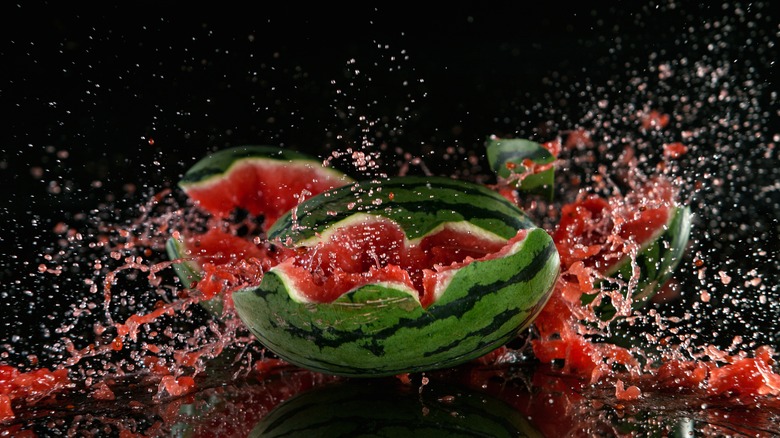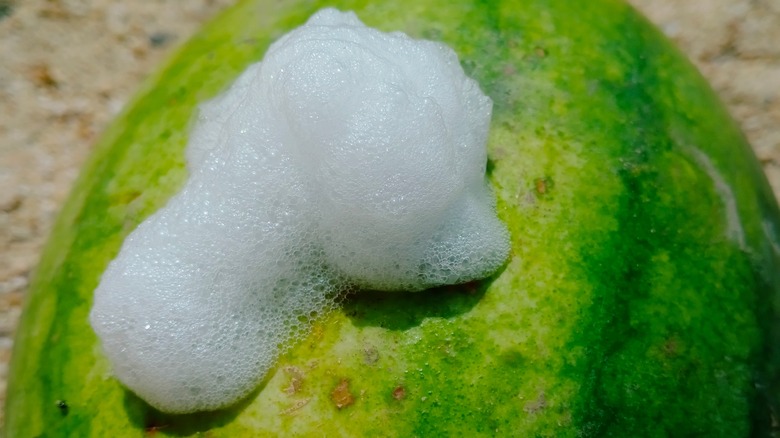How Worried Should You Be About Exploding Watermelons?
Watermelons have a slight air of mystery. While a watermelon's outward appearance can be indicative of what's going on beneath its tough exterior, you never really know what you're getting until you cut it open. If you're lucky, the inner flesh is red, sweet, and juicy. Other times, the fruit may be disappointingly pale and spongy. However, the internal workings of watermelons are never more mind-boggling than when the fruit spontaneously combusts on your kitchen counter.
Exploding watermelons may sound like a mindless game you can play on your iPad, but in reality, it's a phenomenon that can occur when watermelons begin undergoing the fermentation process. Fermentation occurs when microorganisms like bacteria, yeast, and mold feast on carbohydrates and sugars to produce energy without the presence of oxygen. As a result of this anaerobic process, sugars and starches are transformed into alcohols and acids, and the microorganisms produce carbon dioxide as a byproduct.
When the inner flesh of a watermelon begins to ferment, the carbon dioxide released has no way of getting through the thick rind. Consequently, pressure begins to build up inside the watermelon, which can eventually lead to combustion. The damage can be minimal, with the watermelon simply splitting open and oozing foam, or it can be dramatic, producing a spray that could rival Splash Mountain.
Why you should steer clear of fermented watermelons
While watermelons that have started to ferment can (and sometimes do) explode, it isn't a common occurrence. Because heat can increase both the likelihood and the rate of fermentation, when temperatures are high, watermelons are more susceptible to this reaction.
Fermentation isn't always a bad thing. It can be an excellent tool for preserving food. It facilitates the growth of probiotics, and it can increase the vitamin and mineral content in food. It is the process responsible for some of our favorite foods and drinks like beer, wine, miso, pickles, and kimchi. However, watermelon that has started to ferment can contain a cocktail of harmful bacteria like salmonella, E.coli, and botulism that could wreak havoc on your body if consumed.
Even slicing into a fermenting watermelon can be dangerous, as the sudden release of pressure can trigger an explosion. For that reason, it's important to know what to look for. A white, fizzing foam emanating from a crack in the watermelon is a good indicator that the fruit has already begun fermenting and should be disposed of. To keep your watermelon from spoiling and spewing goo all over your kitchen, it's best to store whole watermelons in the refrigerator. Fermentation is still possible within the cool confines of the fridge, but the cold helps to decelerate the process.

